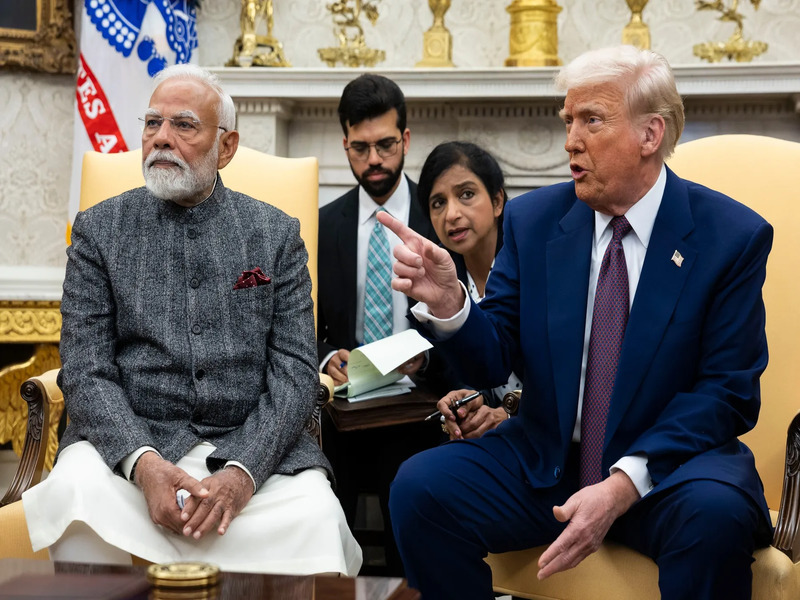Trade ties between the United States and India took a sharp downturn on Wednesday after President Donald Trump signed an executive order imposing an additional 25% tariff on Indian exports, raising the total duty on affected goods to 50%. The move, which follows an earlier 25% tariff introduced last week, is aimed at penalising India for continuing to import oil from Russia.
“This is about alliances,” Trump said in a CNBC interview. “They’re fueling the war machine. And if they’re going to do that, then I’m not going to be happy.” (Source: CNBC)
The White House confirmed that the new tariff will take effect within 21 days. The announcement came hours after Trump publicly criticised India’s trade practices and accused the country of benefiting from U.S. access without offering reciprocal terms.
“I find that the government of India is currently directly or indirectly importing oil from the Russian Federation,” the President said in the executive order.
The iShares MSCI India ETF fell to session lows following the news. Oil prices surged, while the rupee held near its record low at 87.91 per U.S. dollar. (Source: Mint)
The timing of the move is particularly sensitive, with the sixth round of U.S.-India bilateral trade talks scheduled to begin in New Delhi on August 25. Indian officials said the negotiations will proceed as planned, but admitted that the latest tariffs have significantly strained the environment.
“This is less about energy policy and more about alignment,” said Ajay Srivastava, founder of the Global Trade Research Initiative. “Trump is using tariffs not just to penalise, but to draw clear lines on global alliances.” (Source: Mint)
India’s continued resistance to opening up its dairy sector – a critical area for rural employment and food security – remains a sticking point in the talks. “Dairy has been excluded from any duty cuts, reaffirming its strategic importance in India’s rural economy,” said Ravin Saluja, Director of Sterling Agro Industries Ltd. (Source: Mint)
Russia quickly defended India, calling the U.S. action part of a “neo-colonial agenda.” Kremlin aide Yuri Ushakov said talks between President Vladimir Putin and U.S. envoy Steve Witkoff earlier this week yielded an exchange of “signals,” without disclosing details. (Source: Mint)
U.S. State Department spokesperson Tammy Bruce said that the President would not hesitate to use “economic instruments that every country can understand,” including the prospect of secondary sanctions.
According to data from the Global Trade Research Initiative (GTRI), India imported $52.7 billion worth of Russian oil in 2024, while China’s imports stood at $62.6 billion. (Source: GTRI via Mint)
India’s Ministry of External Affairs responded to the escalating rhetoric earlier this week, calling the targeting of India “unjustified and unreasonable.” It noted that the U.S. and EU continue to trade extensively with Russia – including in nuclear materials, fertilizers, and LNG.
EU imports of Russian LNG hit a record 16.5 million tonnes in 2024, while goods trade with Russia reached €67.5 billion that year. India, meanwhile, has maintained that its Russian oil imports are driven by national economic interests, aimed at stabilising domestic energy prices.
As global markets react and diplomacy hangs in the balance, analysts warn that Trump’s aggressive tariff strategy may reshape the dynamics of U.S.-India relations, just as both nations seek stronger strategic alignment to counterbalance China’s influence in the region.





